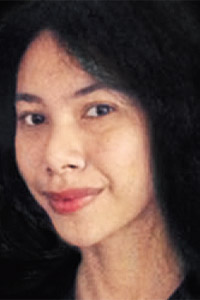The Bangkok Art and Culture Centre (BACC) made headlines last month owing to more than one reason. Even before (appointed) Bangkok governor Aswin Kwanmuang articulated his irking comments -- by which he made it known to the world that he would like to see the art centre turned into a co-working space packed with chairs -- critics and defenders of the BACC's management were already arguing on social media.
In the heat of May, the mere mention of Italian painter Caravaggio's name online apparently had observers of the Bangkok art scene reaching for their keyboards in knee-jerk reactions.
The travelling exhibition "Caravaggio Opera Omnia", co-organised by the Embassy of Italy, was indeed a major let-down for those who failed to read the brochure. The 40 "paintings" by Caravaggio in the show are merely digital renditions of the original masterpieces, and presented by way of light-boxes.
Critics, on the one hand, denounced the use of light boxes, as they alter the colour palette of the original paintings; a perfectly valid point since the Italian painter is renowned for his chiaroscuro technique, his singular arrangement of light and shade. However, other attacks on the BACC -- regarding this exhibition -- seem unjust to me.
Is the BACC unfit for international standards, in regards to other art institutions worldwide, because it failed to secure 40 original Caravaggio paintings for a temporary exhibition? I don't think so. The fragile nature of the works makes shipping to Thailand -- I believe -- near-impossible, while the country's humid climate spells disaster. Furthermore, the BACC's resources are what they are, and we shall have to be content with them for the moment.
Still, "Caravaggio Opera Omnia" fills a justifiable educational purpose. Only a fringe of Bangkok's population -- let alone Thailand's -- has the means to travel to Italy to view the original paintings. And while an art historian will cringe at every remark by BACC visitors saying they adored Caravaggio based on this exhibition alone, it provides a good introduction to the Italian master's works. And for many, it won't be an entry point but perhaps their sole contact with Caravaggio.
This leads me to the second point of contention that has surrounded the BACC in the past month. That a city governor, who upholds the Bangkok Metropolitan Administration's motto "a life that's great and balanced", sought to close down access to art and art education is downright shocking.
How can life in Bangkok be balanced when there are dozens of shopping malls for just a handful of cultural landmarks? If cities are supposed to be spaces of diversity and opportunity, why remove a diverse offer of activities for its people?
The BACC, with all its failings and limitations, has proven over the years to be a uniting location and one of the rare institutional spaces where freedom of expression can still be exercised.
While the socio-political protests staged inside or in the vicinity of the BACC have often upstaged its exhibitions, it has a good offer of public programmes and film screenings. The venue remains popular because it is easy to access and frequented by people from different groups in society.
Sure, the coffee shops and ice-cream parlour appear more crowded than the actual exhibition spaces located on the centre's top floors, but the simple act of coming to an art centre is already a feat in itself -- considering that many Bangkok residents would feel too uncomfortable to enter private art galleries.
And that doesn't mean visitors won't stumble on a drawing or a photograph on their way out, that will make them want to return for more.
Ariane Kupferman-Sutthavong is a features writer of the Life section of the Bangkok Post.
